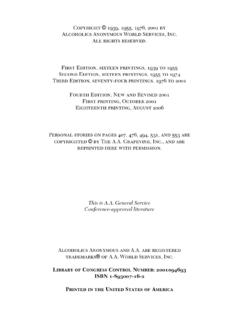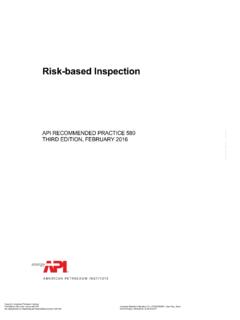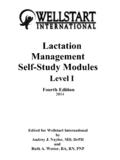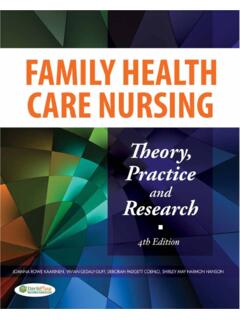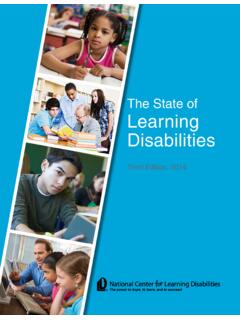Transcription of The Sedona Principles, Third Edition: Best Practices ...
1 The Sedona Conference Journal Volume 19 | Number 1 2018 The Sedona Principles, Third edition : Best Practices , Recommendations & Principles for Addressing Electronic Document Production The Sedona Conference Recommended Citation: The Sedona Principles, Third edition : Best Practices , Recommendations & Principles for Addressing Electronic Document Production, 19 Sedona Conf. J. 1 (2018). For this and additional publications see: Dz DZ DZ THESEDONAPRINCIPLES, Third Edition: BESTPRACTICES,RECOMMENDATIONS&PR INCIPLES FOR ADDRESSING ELECTRONICDOCUMENT PRODUCTIONA Project of The Sedona Conference Working Group on Electronic Document Retention and Production (WG1) Author.
2 The Sedona Conference Drafting Team:Anthony J. Diana Eric P. Mandel Amor A. Esteban Timothy M. Opsitnick Joseph P. Guglielmo Charles R. Ragan^Ted S. Hiser^Dena C. Sharp Dean Kuckelman ^Martin T. Tully Judicial Participant:The Honorable Andrew J. Peck^Team Leader and WG1 Steering Committee Liaison:William P. Butterfield Copy Editor:Susan M. McClain WG1 Steering Committee ^ Editorial Style Committee Copyright 2017, The Sedona Conference. All Rights Reserved. 2 THESEDONA CONFERENCE JOURNAL[Vol. 19 The opinions expressed in this publication, unless otherwise attributed, represent consensus views of The Sedona Confer-ence Working Group 1. They do not necessarily represent the views of any of the individual participants or their employers, clients, or any other organizations to which any of the partici-pants belongs, nor do they necessarily represent official posi-tions of The Sedona Conference.]
3 We thank all of our Working Group Series and Annual Spon-sors, whose support is essential to our ability to develop Work-ing Group Series publications. For a listing of our sponsors, just click on the Sponsors navigation bar on the homepage of our website. 2018] THESEDONA Principles, THIRDEDITION 3 This publication may be cited as follows: The Sedona Principles, Third edition : Best Practices , Recom-mendations & Principles for Addressing Electronic Docu-ment Production, 19 Sedona CONF. J. 1 (2018). The recommended short citation form is simply: The Sedona Principles, Third edition , 19 Sedona CONF.
4 J. 1 (2018). Com-ments. For example: The Sedona Principles, Third edition : Best Practices , Recom-mendations & Principles for Addressing Electronic Docu-ment Production, 19 Sedona CONF. J. 1, 53 54 (2018). The Sedona Principles, Third edition , 19 Sedona CONF. J. 1, Principle 11, 164 168 (2018).The Sedona Principles, Third edition , 19 Sedona CONF. J. 1, Cmt. , 108 109 (2018). 4 THESEDONA CONFERENCE JOURNAL[Vol. 19 INMEMORIAMThe Third edition of The Sedona Principles would not be a re-ality without the vision and efforts of two great lawyers and hu-man beings, who are no longer with us Richard Braman and Bill Butterfield. Richard G. Braman (1953 2014) was the founder and first Executive Director of The Sedona Conference.]
5 Much has been written and said in the nearly three years since Richard left us, but it is undeniable that Richard s vision turned The Sedona Conference from an idea on paper into a world-renowned think tank that can move the law forward in reasoned and just ways. Richard s passion for meaningful human interaction and dia-logue not debate guided his inspirational journey at The Se-dona Conference, as well as his early careers as a practicing law-yer and even jazz club owner. He challenged convention in all the right ways, while building and sustaining personal and pro-fessional relationships. His positive impact on the profession, as well as on his family and friends, was profound. What may be relatively unknown, however, is how Rich-ard s vision, entrepreneurial spirit, and drive provided all the right ingredients to allow the concept of The Sedona Principles to grow and blossom in the first place.
6 In the Spring of 2002, Rich-ard was keen to take The Sedona Conference to the next level beyond the highly successful educational regular season ex-periences provided in the areas of Complex Litigation, Anti-trust, and Intellectual Property. When presented with the idea to invite a group of people to Phoenix in the Fall of 2002 with the ambitious goal of developing principles that could help guide litigants and courts in the nascent arena of electronic dis-covery, Richard did not hesitate. He instantly recognized the area as one where the magic of dialogue among interested pro-fessionals, many of whom he had never met, could well lead to the development of something worthwhile that would move the 2018] THESEDONA Principles, THIRDEDITION 5 law forward in a reasoned and just way.
7 He dove in headfirst to build the structure of the Working Group Series to help support the effort, while also seeing the opportunity to use Working Groups across many areas in the future as a way to realize his dream of that next level for The Sedona Conference. And then Richard did what many people find impossible to do: he trusted the assembled group to follow the formula of open dialogue to reach that reasoned and fair output, which was first embodied in 2003 in The Sedona Principles. Richard certainly challenged the group, and had his eye on the meetings and work product to ensure fealty to the core principles of The Sedona Conference. But he did not try to write the document himself, and he did not interfere with the editorial process or dictate out-comes.
8 Instead, he relentlessly fanned the flames of active, in-tense, and meaningful dialogue as the document took shape. Af-ter the first public comment version of the Principles was distributed free of charge for the world to scrutinize, Richard did not rest, but he immediately spurred and led efforts to ac-tively recruit new members from diverse backgrounds and per-spectives to join the dialogue to refine and reshape the s unique combination of passion, vision, energy, in-tellect, humor, and agility were all critical to providing the safe space for the development of The Sedona Principles from its in-ception fifteen years ago through the publication of this Third edition , and the publication of many more works by The Sedona Conference.
9 Including the marquee The Cooperation Proclamationwhich was a signature achievement for Richard. William P. Butterfield ( Bill ) (1953 2016) was renowned as a successful complex business litigation and class action law-yer. Over nearly two decades, he also achieved top recognition as a leading electronic discovery specialist as a practitioner, a teacher, a mentor, a speaker, an author, and an expert. 6 THESEDONA CONFERENCE JOURNAL[Vol. 19 Among his most coveted roles, Bill served as an ambassador of Working Group 1 of The Sedona Conference for many years, first as an active member of the Working Group, next as an ap-pointed member of the Steering Committee, and ultimately as Vice-chair and then Chair of the Steering Committee.]
10 Bill was an early architect of The Cooperation Proclamation,first published in 2008. Working side-by-side with Richard Braman, Bill and others crafted a white paper (The Case for Coop-eration) that was both provocative and practical, and launched a national drive to promote open and forthright information sharing, dialogue (internal and external), training, and the de-velopment of practical tools to facilitate cooperative, collabora-tive, transparent discovery. As of this writing, the Proclamationhas been endorsed by more than 215 judges nationwide, and has served as a guidepost for lawyers and judges as they navigate discovery of electronically stored information from ever-evolv-ing technologies. The Proclamation also paved the way for the acknowledgement of the importance of cooperation, as reflected in the Advisory Committee Notes to the 2015 amendments to the Federal Rules of Civil Procedure.
